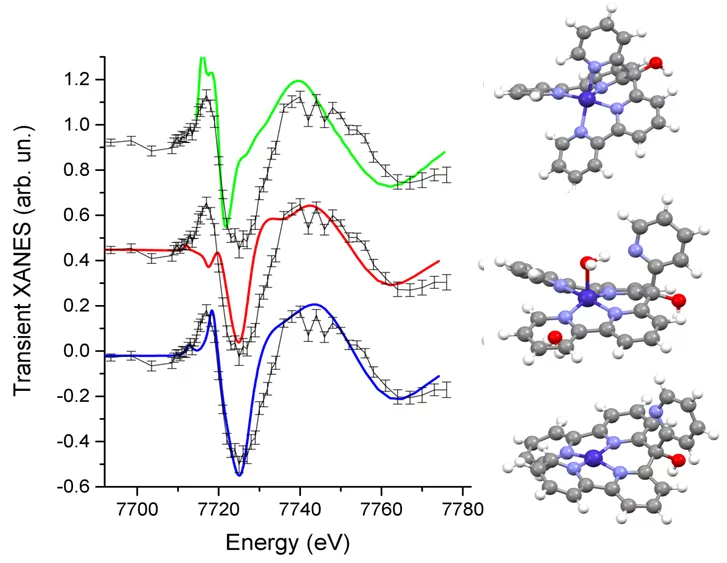The mechanism of hydrogen evolution by cobalt polypyridyls catalysts is investigated. Pump-probe X‐ray absorption spectra measured at SuperXAS in the microsecond time range indicate that the pendant pyridine dissociates from the cobalt in the intermediate Co(I) state. This opens the possibility for pyridinium to act as an intramolecular proton donor, which can be used for the development of efficient catalysts.
Cobalt polypyridyls are highly efficient water‐stable molecular catalysts for hydrogen evolution. The catalytic mechanism explaining their activity is under debate and the main question is the nature of the involvement of pyridyls in the proton transfer: the pentapyridyl ligand, acting as a pentadentate ligand, can provide stability to the catalyst or one of the pyridines can be involved in the proton transfer. Time‐resolved Co K‐edge X‐ray absorption spectroscopy in the microsecond time range indicates that, for the [Co(II)(aPPy)] catalyst (aPPy=di([2,2′‐bipyridin]‐6‐yl)(pyridin‐2‐yl)methanol), the pendant pyridine dissociates from the cobalt in the intermediate Co(I) state. This opens the possibility for pyridinium to act as an intramolecular proton donor. In the resting state, the catalyst returns to the original six‐coordinate high‐spin Co(II) state with a pentapyridyl and one water molecule coordinating to the metal center. Such a bifunctional role of the polypyridyl ligands can be exploited during further optimization of the catalyst.
Contact
Dr. Grigory Smolentsev
Paul Scherrer Institut
+41 56 310 51 73
grigory.smolentsev@psi.ch
Original Publication
Structure of the Co(I) Intermediate of a Cobalt Pentapyridyl Catalyst for Hydrogen Evolution Revealed by Time‐Resolved X‐ray Spectroscopy
Grigory Smolentsev, Mikhail A. Soldatov, Benjamin Probst, Cyril Bachmann, Nicolo Azzaroli, Roger Alberto, Maarten Nachtegaal, Jeroen A. van Bokhoven
Publication date, 15 July 2018
DOI: 10.1002/cssc.201801140

